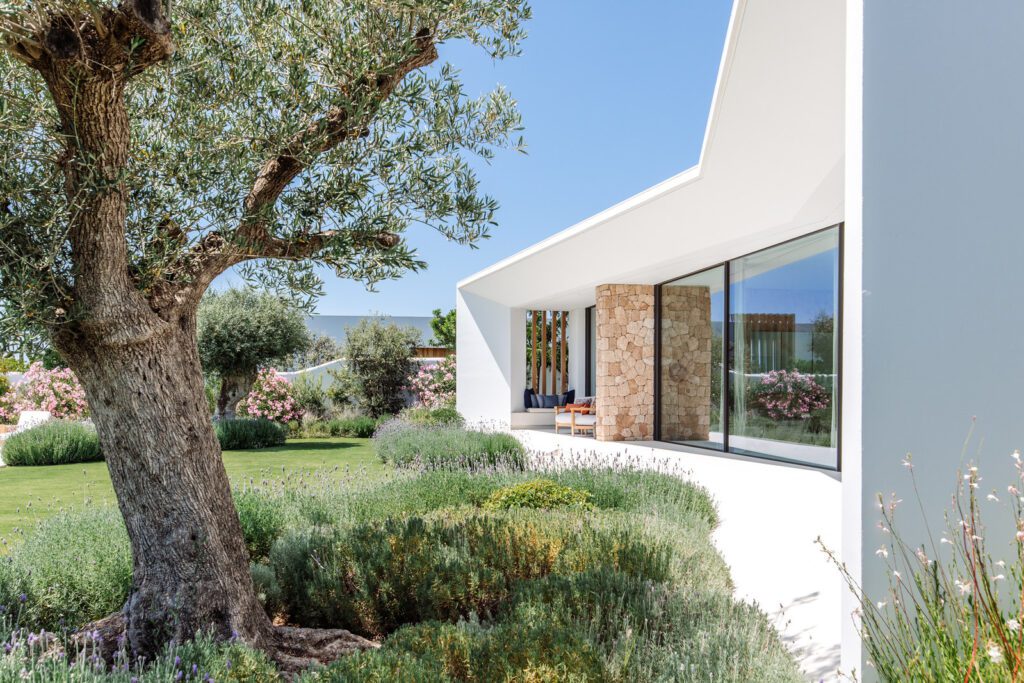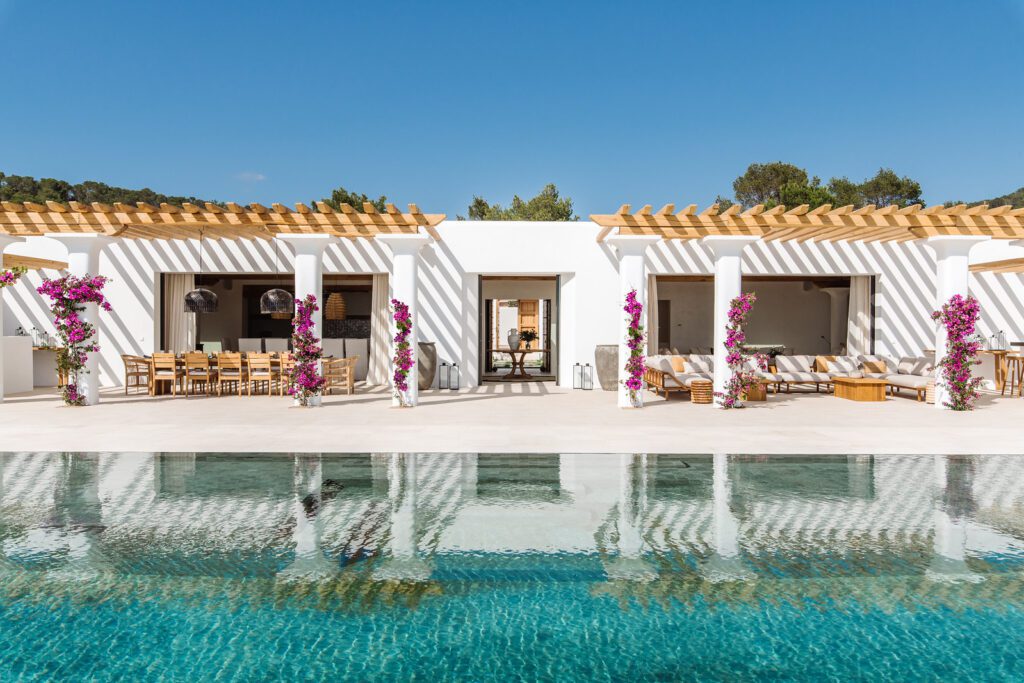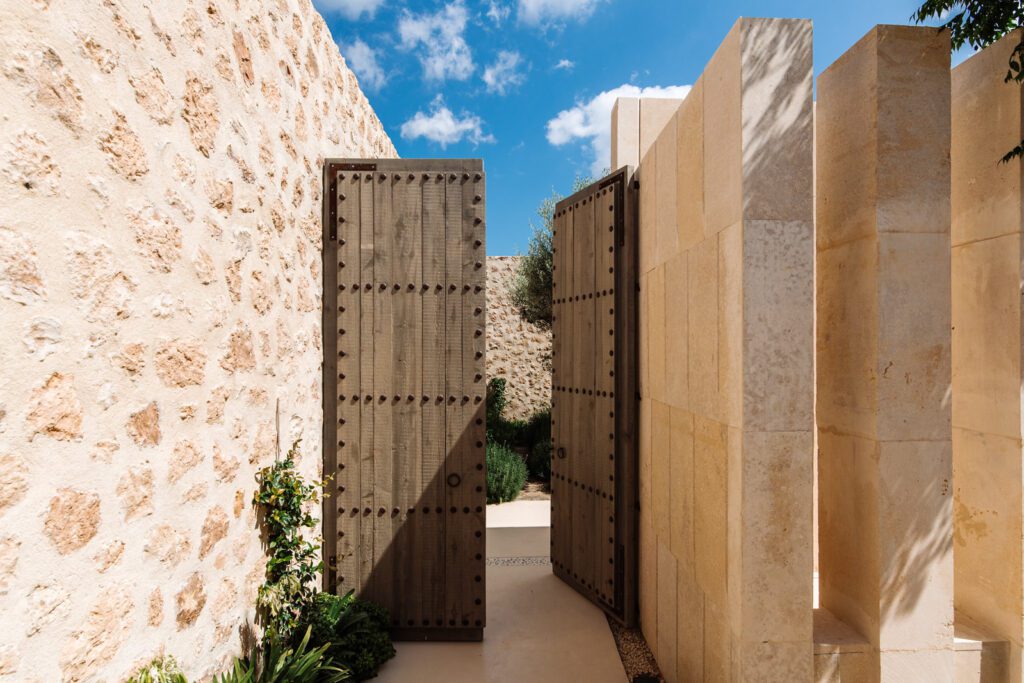Architectural freedom
The exclusive new Sabina Ibiza residential development is far from your average urbanisation. Each architect was given total freedom when designing their parts of the project – here, three of Ibiza’s most illustrious designers share their thoughts on the process.
The ultimate goal for any person working in a creative field is freedom. It’s tough to achieve as – even in the most solitary of artistic endeavours – there is the inevitable moment of compromise and collaboration. In architecture, creative freedom always comes with a caveat. There are legislative constrictions, topographical obstacles and the sometimes impossible desires of clients. For the architects involved in Sabina Ibiza, an exclusive property development in Ibiza’s west, freedom was the concept right from the start.
Conceived by British property developer Anton Bilton with co-founders Agustín del Pino and Glyn Hirch, Sabina Ibiza is a collection of ultra-luxurious homes designed specifically to attract and create a community of like-minded people. Designed to be built in stages, the first phase – now complete – consists of a communal clubhouse and a series of homes designed by Ibiza’s most illustrious architects – Jordi Carreño, Rolf Blakstad and Jaime Romano.

Carreño has been involved in the Sabina Ibiza project since 2015, and was responsible for the master plan. The site sits on 17 hectares of Mediterranean gardens and pine forest under Sa Talaia, the highest peak on Ibiza. The concept was refined over many brainstorming sessions aimed to find a way to convert the three founders’ vision into reality. “It was a process,” says Carreño. “I had to find order in all the ideas to arrive at where we are today. There was a moment where everything changed and started to make sense – that was when I proposed that each of the houses should be one level. That single element brought cohesion to the volumes of the whole estate.”

In addition to being the architectural coordinator of the project, there are also also six of Carreño’s own designs included in phase one. “For this project, my goal was to bring a modern, global viewpoint to the traditions of Ibiza,” he says. “There is a clear intention of maintaining links to the Mediterranean and the island and without departing from that idea, I wanted to bring it further into the contemporary.” Carreño’s homes connect the ancient and established farmlands of Ibiza with the flourishing Mediterranean gardens of Sabina Ibiza. The shape is elongated and opens completely on one side, flooding the spaces with natural light. The flat roof is covered with greenery and scattered with wildflowers, providing a seamless transition between the natural environment and the architecture.
One of the many gifts Sabina Ibiza has afforded Carreño is the opportunity to closely collaborate with some of his island colleagues plus a roster of big international names. It’s rare for an architect to step into the studios and minds of his peers. “To get to see how each of these architects work was a privilege,” he says. “Normally you see their projects when they are finished, but this time I got to see the process and stages. I had access to their kitchens and got to see how they cook. It was very special to work so closely with people of such standing.”

The Blakstad name has a long association with Ibiza. Rolph Blakstad, the founder of the architectural and design firm of the same name, arrived in Ibiza in the late 1950s and set up his studio in the 1970s. Today, the legacy is continued by his children, with son Rolf taking the helm. With a style firmly rooted in the history of the local architecture, a Blakstad home has become shorthand for a certain style of modern farmhouse. “It’s very much about the flow between the interior and exterior spaces,” Rolf Blakstad says. “Because 80% of living on Ibiza is done outdoors, we make the two realms unfold into each other.” With shapes reminiscent of the crumbling farmhouses still seen across the island, Blakstad’s Sabina Ibizadesigns contain notes of historic importance with a modern outlook. Bright and spacious with clean simple lines, he aims to create comfortable year-round living.

The Clubhouse and Temple in the communal parts of the development were also designed by Blakstad and set the general tone for the way life at Sabina Ibiza will evolve. “The concept as a whole was fantastic,” Blakstad says. “I have deep gratitude for the opportunity to be involved in this project. It was really something special.” The Blakstad style slides faultlessly into the landscape, both complementing and contrasting with the designs of other architects.

Jaime Romano is the third of the local architects to be involved with Sabina Ibiza. When he was first approached he had his doubts about the project, but soon came to realise the scope and goal could work, and work beautifully. “Jordi’s layout was very clever,” he says. “It has harmony and consistency and I was very confident in the vision.” Romano’s design has a touch of California modernism about it with slender pillars and sharp edges. “It’s a contemporary approach but with local materials,” he says. “The textures belong to the Mediterranean.”

Romano used Piedra Marés, a sandstone found in southern Italy, Menorca and Mallorca – the very same stone that was quarried by the Phoenicians in Ibiza. The quarries left behind in the Balearics and some parts of Italy are beautiful and ghostly reminders of architecture’s ancestors. The method of extracting the stone leaves uneven vertical lines carved into the surface, at first wobbly from the hand mining methods of the Phoenicians and Romans, then slowly becoming more uniform as the centuries went by, bringing with them machinery and precision. “You can see how the technology advanced by looking at these quarries,” says Romano. “I cut the stone to emulate these beautiful old spaces.” The result within Sabina Ibiza is stunning – a manifesto to the project’s Mediterranean roots.
Working with a developer is not always easy as creativity and fiscal concerns can be a challenge to each other, however each of these master designers has found the Sabina Ibiza experience to be singularly freeing. While the common restrictions remain, creativity was permitted to flourish with little interruption from the founders and their team. “One of the advantages of working with Anton was that we were given a blank canvas,” says Romano. There is no one author to this effort, built with unfailing commitment and anticipation. The overarching theme and shared philosophy beyond beautiful aesthetics is the desire to do something wonderful and to do it well. The outcome is a communal work of art.





